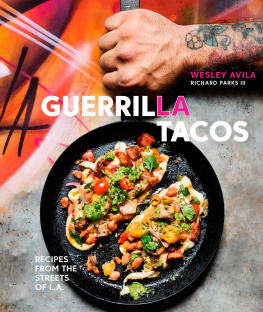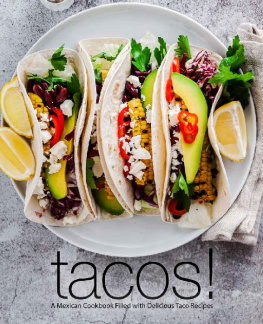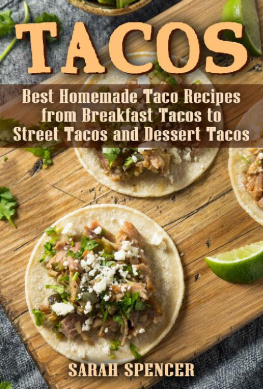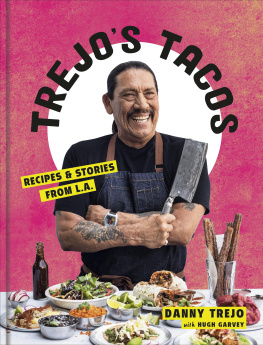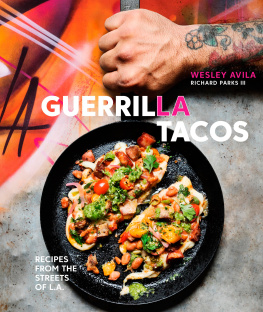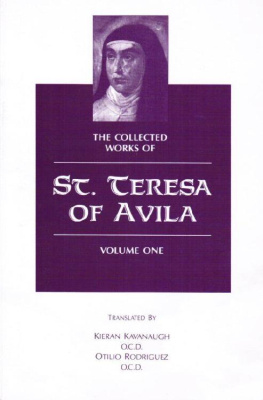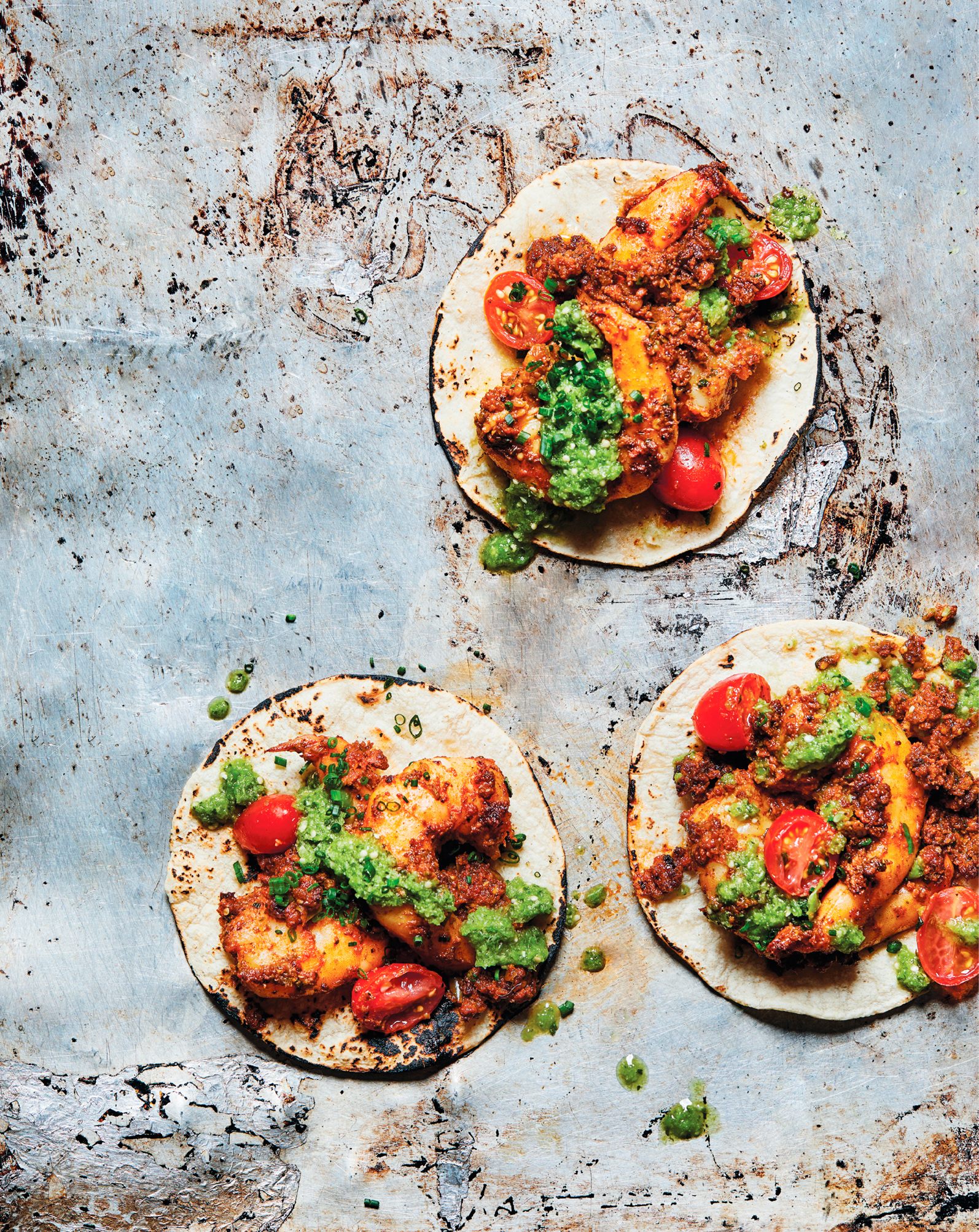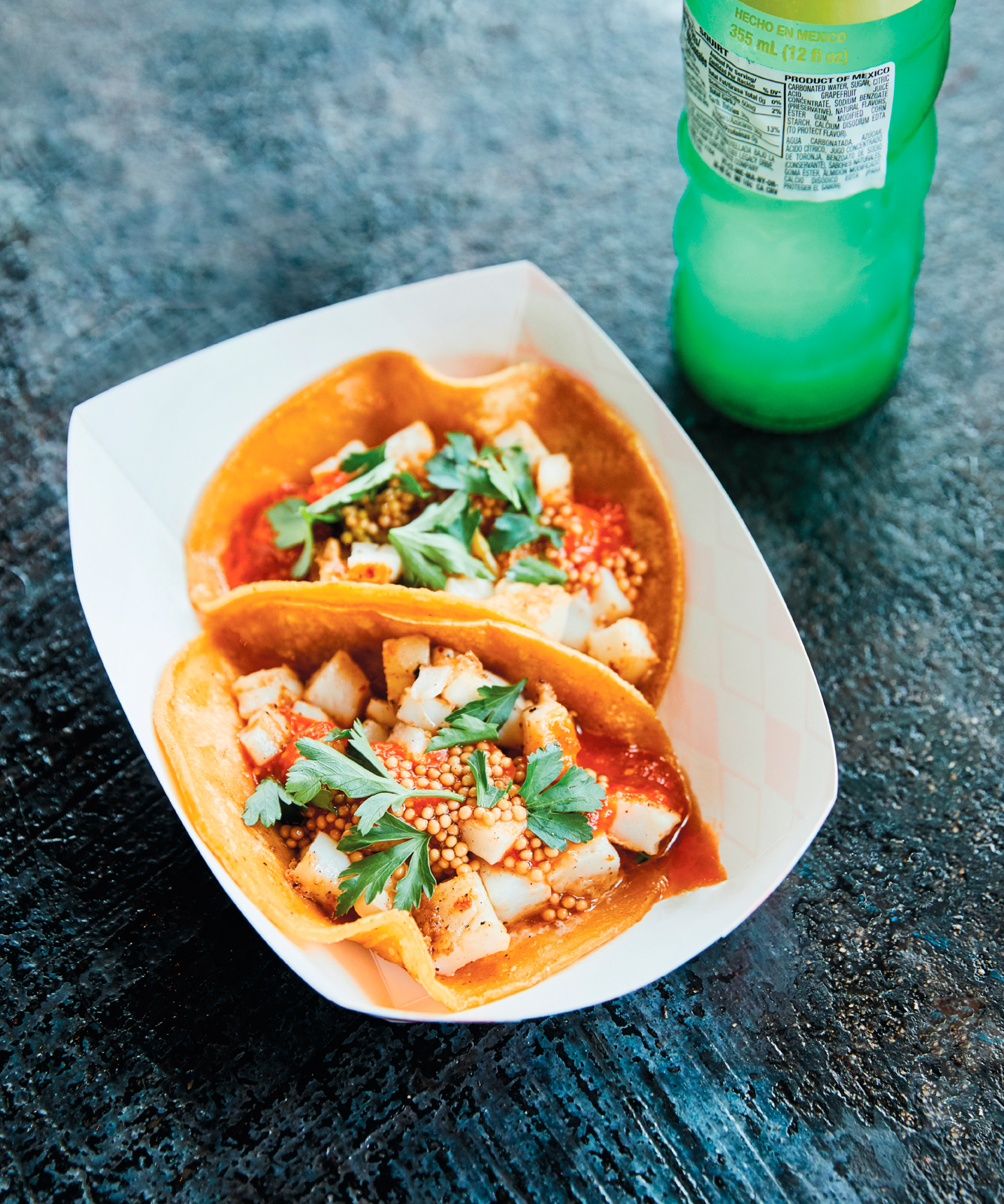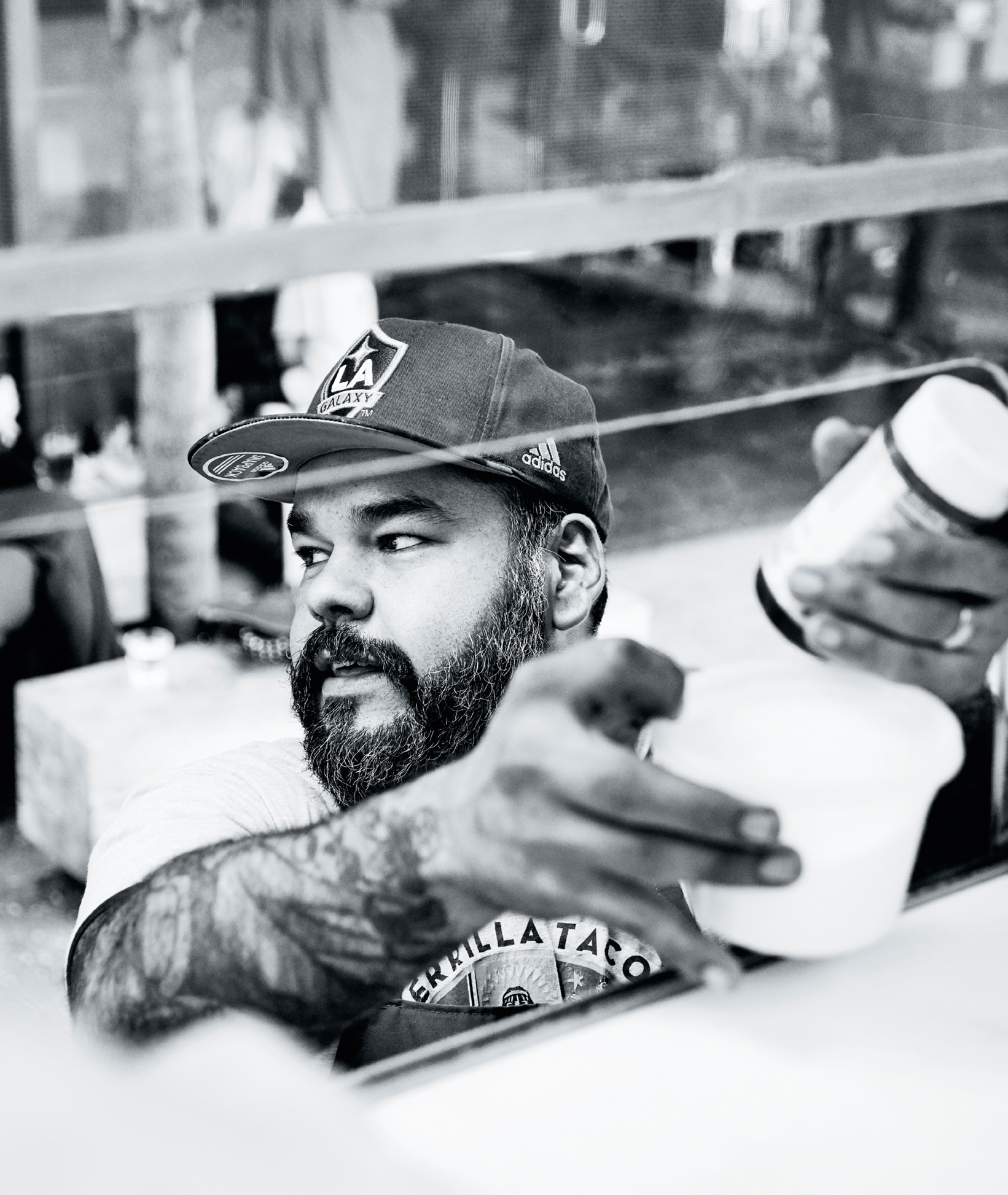PANTRY STUFF
Here is the key tool and some of the ingredients that made it possible to start Guerrilla Tacos out of a home kitchen in Glendale, California, in 2012. Ninety percent of the cooking is done with these.
Cast-Iron Skillet
Youll be using this in every single recipe in this book. Nowadays these are expensive. They used to be cheaper. Its always best to get them second-hand at a flea market or second-hand store. Youll pay a quarter of what you would new. And at that price, you should have a full setan assortment anywhere from 6 inches to 12 inches in diameter.
When you get the skillet home, the first thing you should do, especially if you got it at a flea market, is wash it really thoroughly with hot soapy water and a Brillo pad to scrape off any rust. Crank up your oven to 375F. Dip a thick kitchen towel into a bowl filled with a generous amount of vegetable oil. Use this to oil up the skillet, all over, inside and out. Put the skillet in the oven for an hour. Take the skillet out and baste it again with the oily towel. Be careful because it will be scorching hot. Pop it in for a second hour. Then remove it, let it cool, wipe it down with a clean towel, and put it away. Between uses, just wipe it out with a clean towel. You shouldnt have to wash it every time. When you have gunk building up, repeat the process as described. When its really, really well-seasoned, you can kind of gently wash it with soap and water.
Butter
All the recipes in this book call for unsalted butter. Here in Southern California, I like to use Plugra. If I cant find Plugra, I like to use Challenge. If you cant find Challenge, just find some nice pure, unsalted butter. My favorite butter in the whole worldto eat with tortillas or bread or wafflesis Beurre de Baratte.
Chile de rbol
One of the most common chiles found in my household growing up was chile de rbol. Youll find this in many recipes throughout the book. It should be common practice to stem these. We never use stems in any of our preparations. These chiles can be found fresh, but thats pretty rare. Most of the time you find them dry, which is how we use them. Take note that when you roast these in your house, make sure you have pretty good ventilation because sometimes people start coughing. The scent of chiles de rbol roasting will forever remind me of coming home from middle school to find my mom cooking something at the stove.
Lard
If you cant find lard in the butchers section of your market, go to a Mexican market or a carniceria(butcher shop). When buying from a Mexican market, youll often find lard just sitting out in pint- or quart-size containers. Just pop that in the fridge until youre ready to use. If you cant get to a Mexican market near you, you can always order lard online.
Olive Oil
I like to use cold-pressed extra-virgin olive oil. I typically use local California olive oil if I can find it because I know where its coming from. For a finishing olive oil, I like Spanish stuff. Any extra-virgin olive oil from Spain should be good for this purpose. If youre in L.A., and shopping at Super King, Al Wazir is a good brand for using in aguachiles and the like.
Salt
For regular everyday cooking I like to use Diamond Crystal Kosher Salt. If you cant find Diamond, Mortons Kosher Salt will do in a pinch. For finishing salt, I like to use fleur de sel or Maldon for seasoning at the end. For tostadas, this is an excellent choice.
Thyme
Whenever Im referencing thyme in the book, I am always talking about fresh thyme. I never use dry thyme. Fresh thyme you can find anywhere. If you cant find it, grow it yourself!
A NOTE ABOUT SALSAS
Oftentimes in making these recipes, youll end up with leftover salsa. Thats a good thing! You can use any of our salsas as a condiment for eggs or sandwichesor just look at when other recipes in the book call for a particular salsa as a way of starting a menu for your next Guerrilla Tacos meal.
Next page
